Gdansk
Maritime History, and the Birth of the Solidarity Movement
![]()
Perched on a gulf of the Baltic Sea, Gdansk has been a port since the earliest times. During much of its history, it has been not Polish but German, initially part of the kingdom of the Teutonic Knights, later Prussian, and most recently, during WWII, an occupied city of the Third Reich. But never mind! In spite of all these German eras, we were pleased to be reminded that Polish culture has survived and Polish nationalism has thrived! In the 21st Century, Gdansk has become one of the most visited cities of Poland.
We arrived at the classic train station. Proceeding to our apartment, we admired the Upland Gate, once the main entrance to the city, and the Gateway to Diuga (formerly a prison and part of the city's defensive wall).
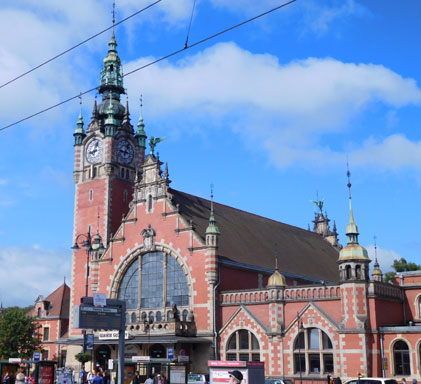
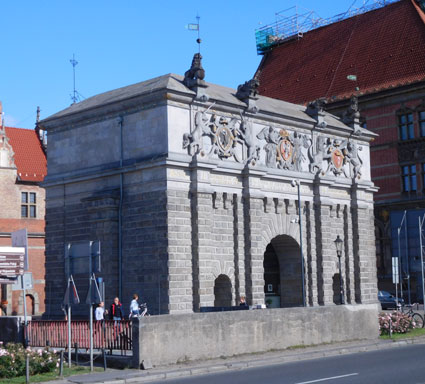
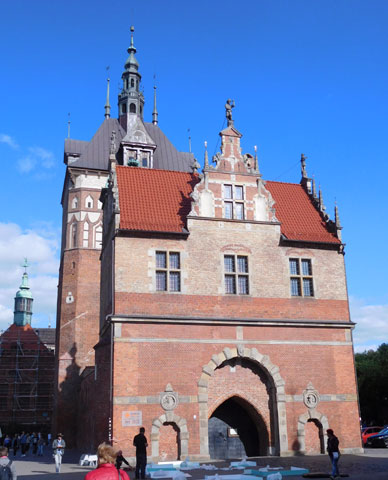
Out to explore, we headed for the Glowne Miasto (Main Town). We had learned that the reconstruction of the Glowne Miasto (Main Town) began soon after the end of WWII. The area restored was the most extensive of all the post war reconstructions in Europe!
Passing through the Golden Gate, the beginning of Ulica Dlurgi (Long Street or Royal Way), one felt transported to an earlier time, 300 to 400 years ago! Ahead and of great interest to us, the many buildings that line this pedestrian street clearly showed the influence of Flemish architects, who were invited to Gdansk to design them!
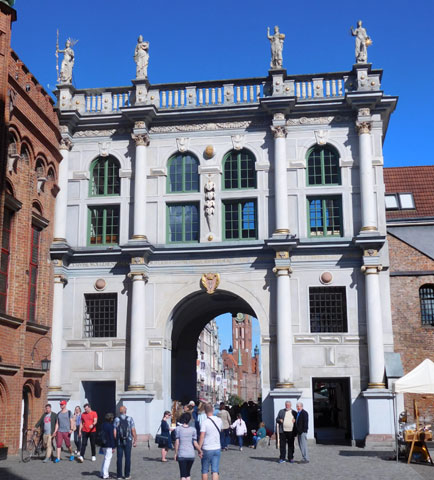
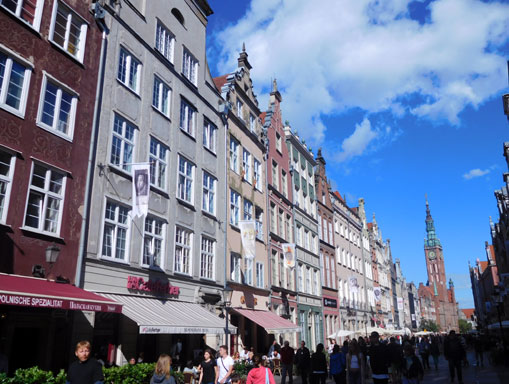
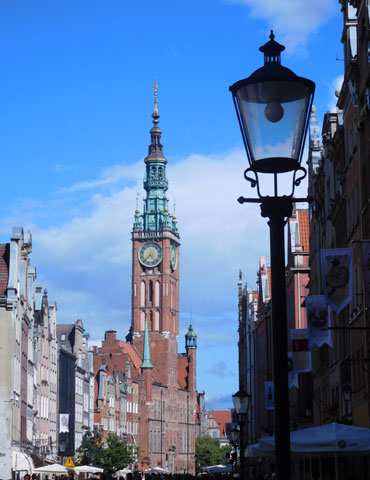
In spite of the crowds of tourists, shops, and the multitude of cafes that populate the street level, we enjoyed the delightful views of these wonderful structures. In addition to the whole streetscape, we more closely admired the Golden House (built in the early 1600s for a rich merchant), and Artus Court (King Arthur's Court), formerly where royalty gathered.
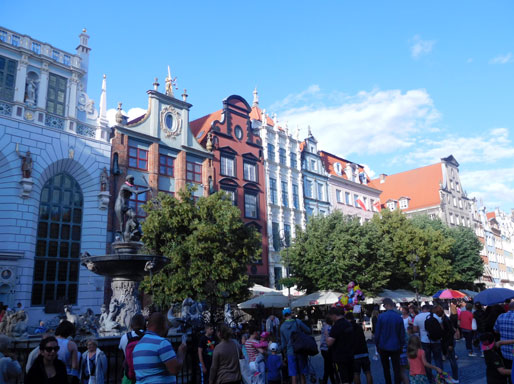
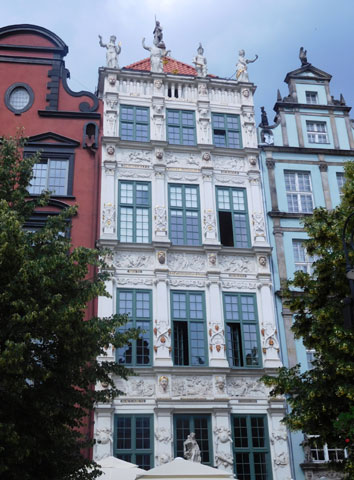
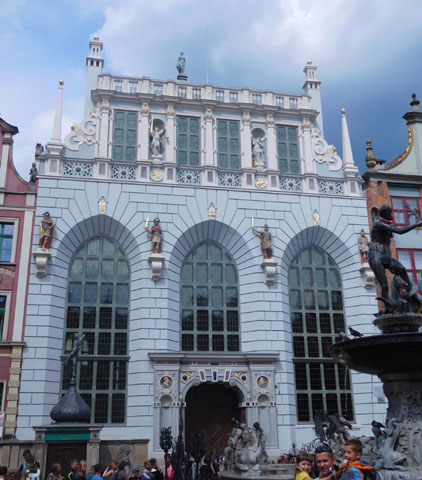
A visit to the historical museum housed in the Old Town Hall provided insights into the former glory of the building, but also the devastation it had suffered in WWII.
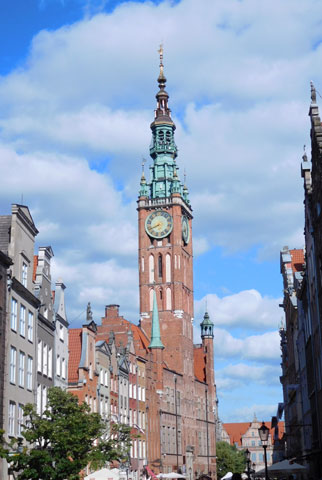
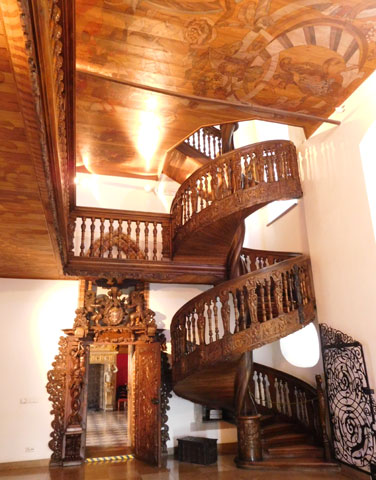
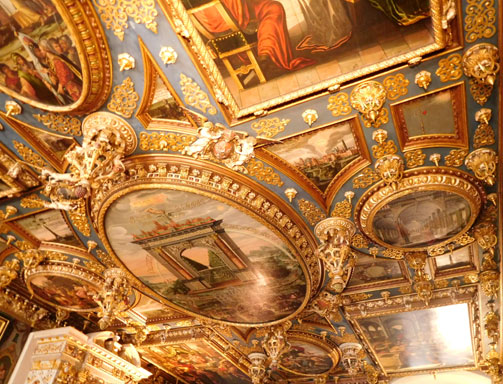
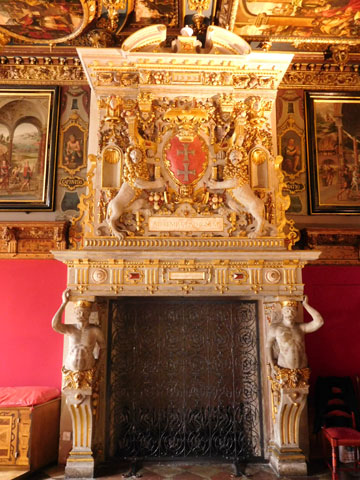
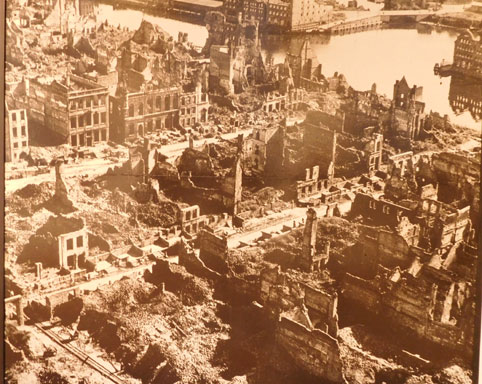
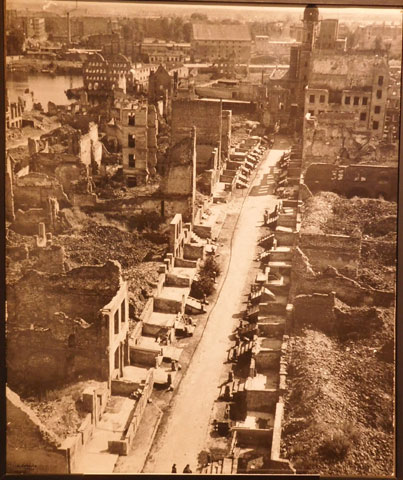
Passing through the Green Gate at the waterside end of the Royal Way, the famous crane obtrudes over the street where there were more shops and cafes, plus quays where boat rides along the river were offered.
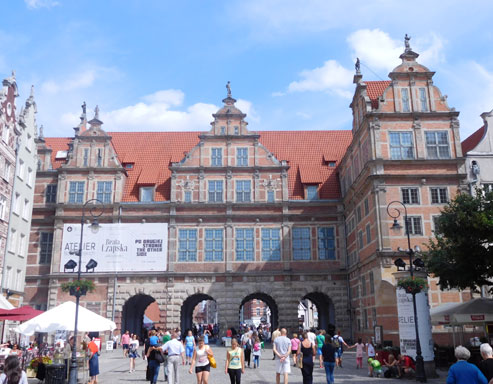
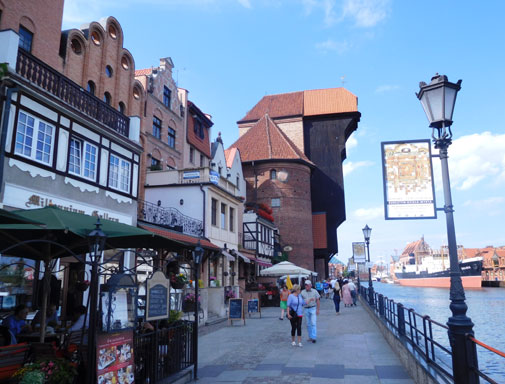
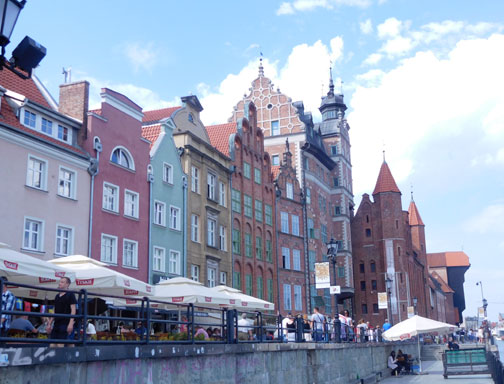
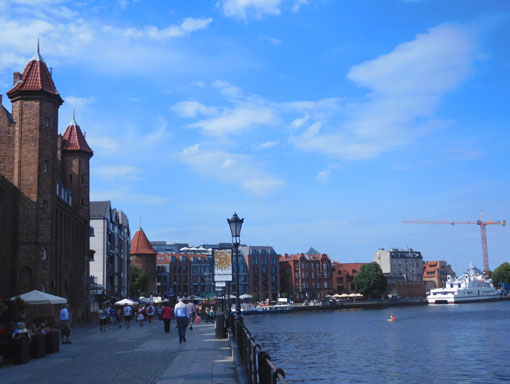
We admired the historic Milk Vats, actually part of the fortifications of the city in earlier times, and the new apartments, part of the more modern additions to the city, on the other side of the quay.
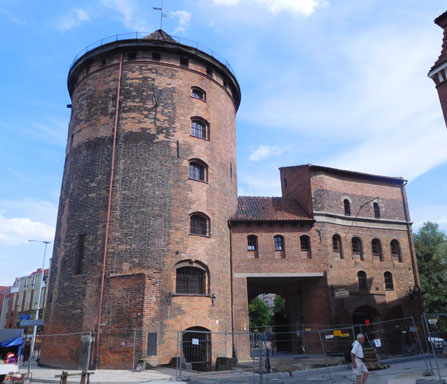
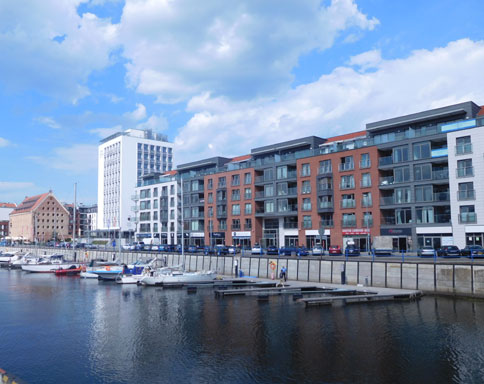
The view down Ulica Mariacka, another reconstructed street of classic buildings, is now dominated by the enormous Church of the Holy Virgin Mary, the largest brick temple in the world, with it's glorious interior. We admired the incredibly ornate organ, the magnificent alterpiece depicting Mary's Crowning, and the 1470s built chronometer, recently repaired and working perfectly.
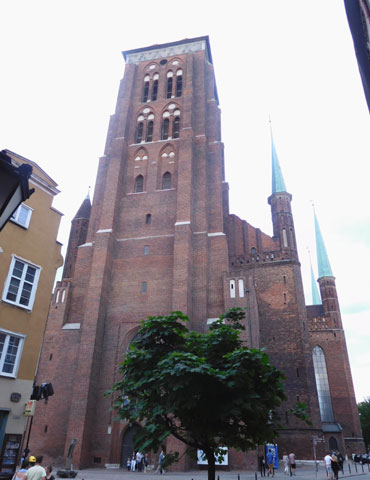
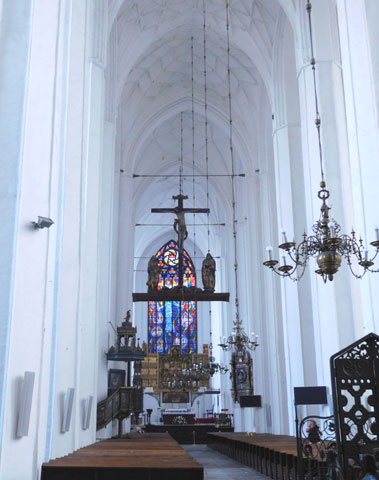
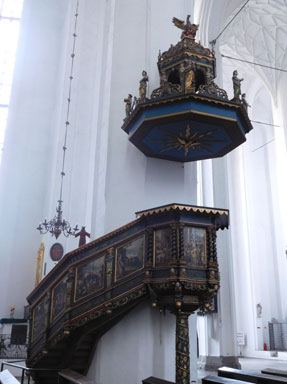
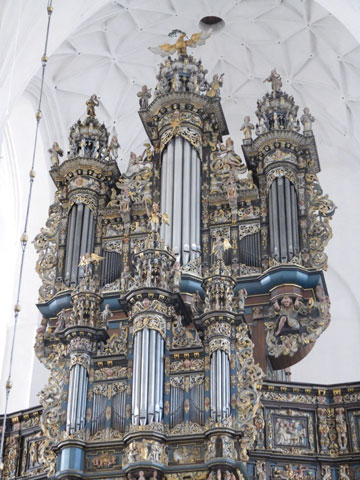
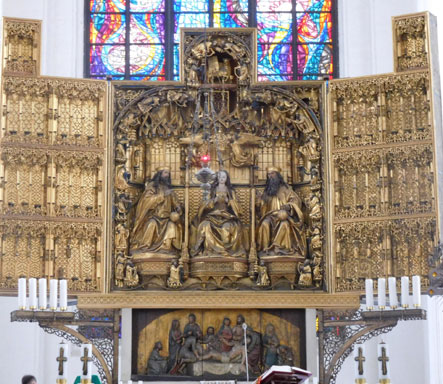
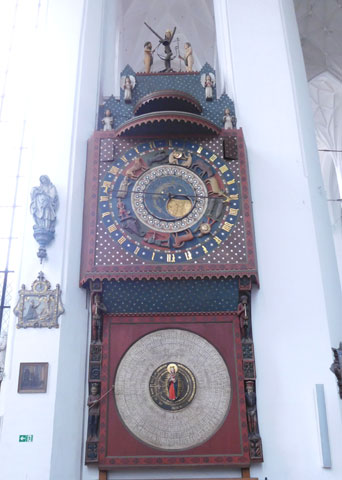
Another of Gdansk's wonderful churches, the nearby St. Katherines, badly damaged in WWII and a recent fire, was rebuilt with the restoriation of it's interior decoration still in progress.
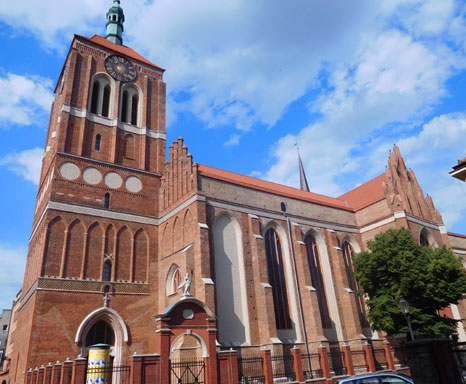
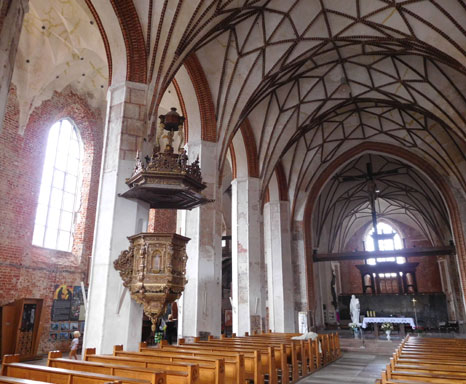
As we explored, we were constantly confronted with classic buildings, all lovingly reconstructed to their former grandeur. Some we enjoyed were the Great Mill, formerly a huge mill for grinding flour but now a shopping center; the Royal Chapel, specially built in the late 1600s for Gdansk's Catholic worshipers; and . . .
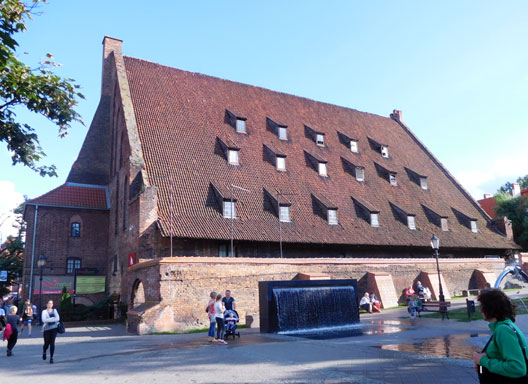
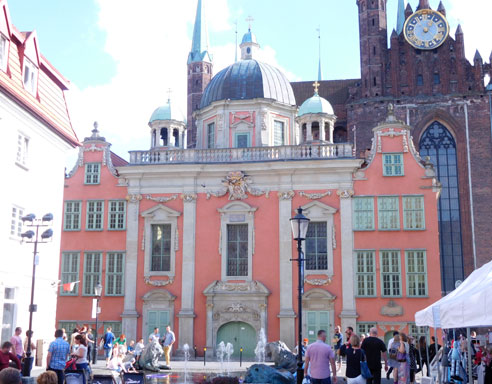
. . . the Great Armory, originally built in the 1600s; and the Market Hall of a similar era.
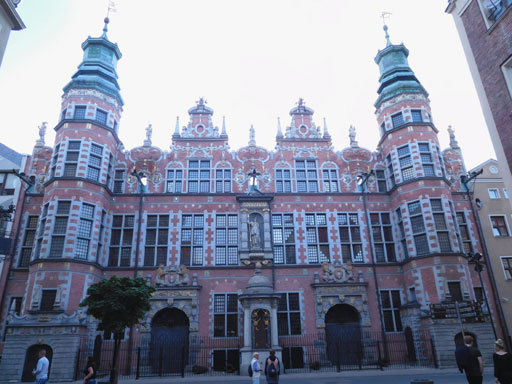
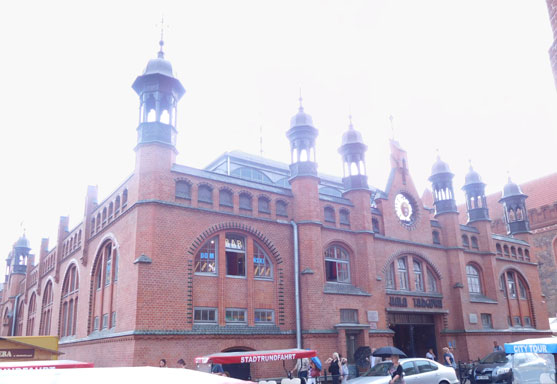
On other walks, we discovered more and more lovely houses with clearly Flemish architectural influence, as well as the Monument to Jan III Sobieski, the Polish general who directed the defeat of the Ottomans by the European forces at Battle of Vienna in 1683.
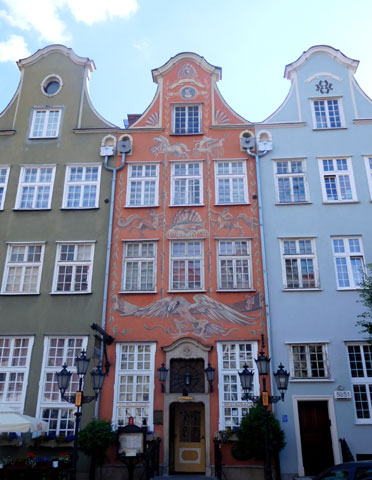
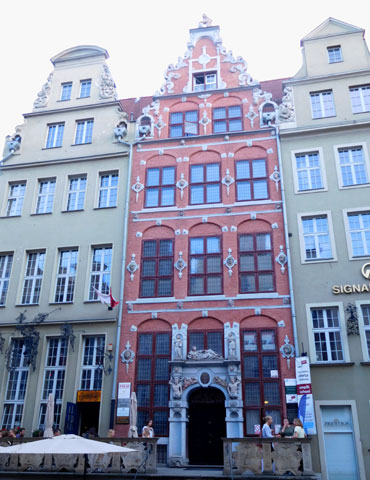
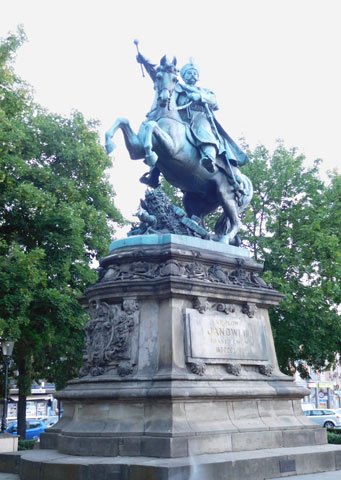
As we explored we were constantly confronted with the many amber shops. Why so many we wondered ! !
A visit to the Amber Museum shed some light on this question. Amber, dredged from the bottom of the Baltic Sea and the river estuaries, has been mined and formed into baubles for jewelry or carved into artistic shapes for centuries. Today, the lure of this strange golden stuff is as strong as ever and draws visitors from far and wide!
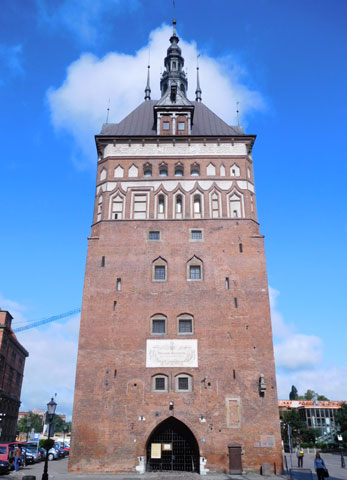
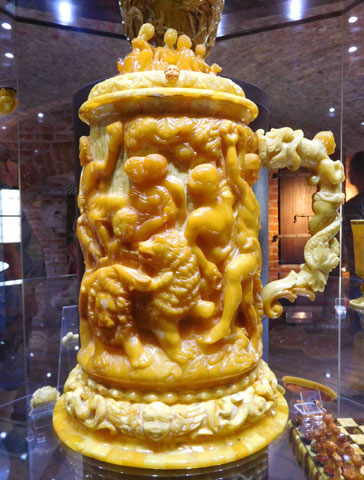
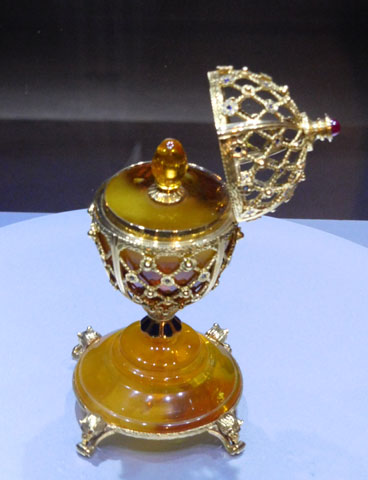
But not everyone flocks to this city for amber! In fact, for those of us who seek to understand the forces that shaped the 20th century, the European Solidarity Centre was a focus of our visit. This new documentation centre housed in an amazing corten steel building. Towering in front is the Monument to the Fallen Shipyard Workers, three tall crosses, each with an anchor attached the top. Nearby, the gate to the shipbuilding complex and inside the sign listing the striker's demands, enabled us to add more pieces to the complex story of the determined resistance of the Polish people to the oppression of communist rule.
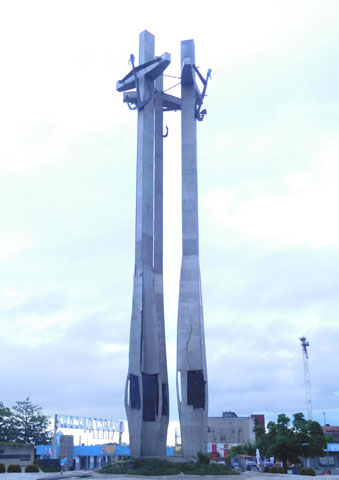
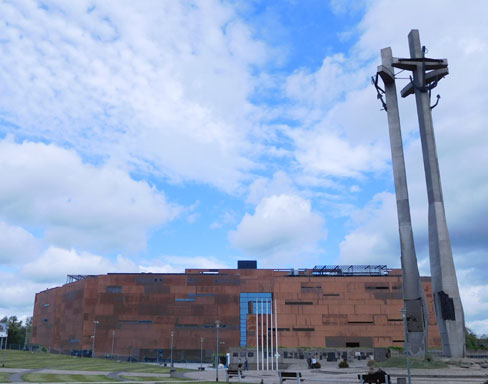
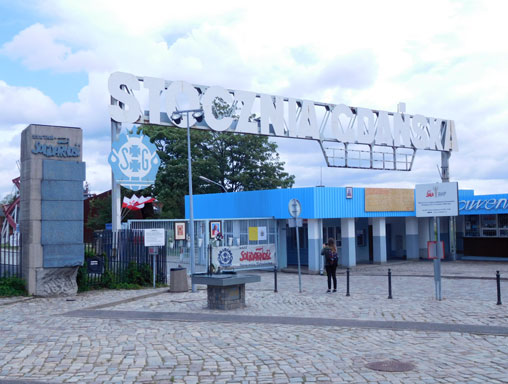
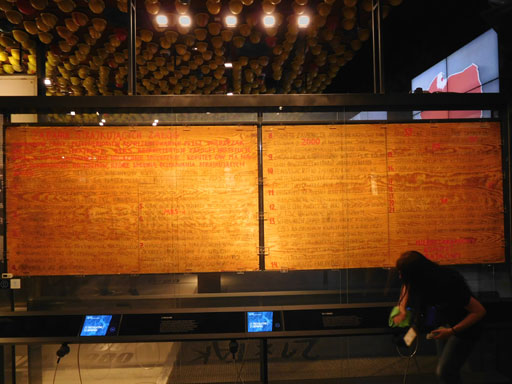
It was in Gdansk in 1970 that the Solidarity Movement began. The Centre's permanent exhibitions tell the stories of the struggles for freedom that began when Lech Walesa and a group of shipbuilders decided to strike. This began Poland's long struggle to gain freedom from the tyranny and persecution of the communist government.
We had lived through the time when this struggle was happening but we were amazed to learn how shallow was our knowledge of the important events that had resulted in the fall of communism in 1989!
Yet another extension of our knowledge of forces that shaped the 20th century was a visit to Westerplatte. It was here, on this peninsula at the mouth of the Wisla and the entrance to the harbor, on September 1, 1939, that the first shots of World War II were fired! Germany initiated the invasion of Poland here! The German battleship, Schleswig Holstein, opened fire on the small garrison stationed there. Around the site, tablets document the events and a great monument stands as a tribute.
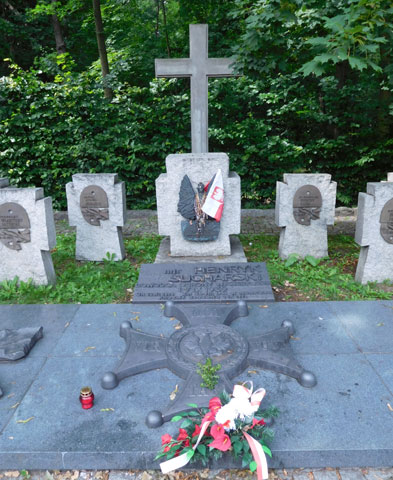
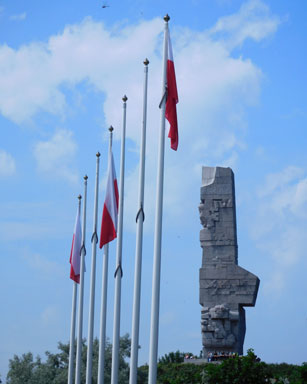
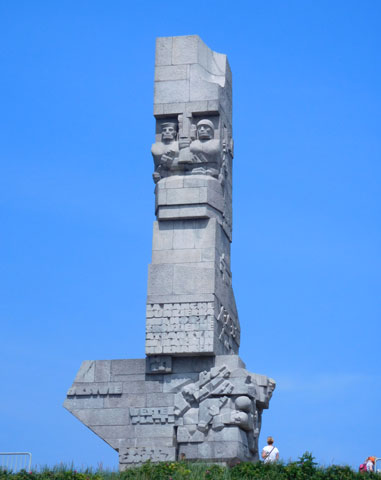
Yet another extension of our knowledge occurred on a day trip to Malbork Castle! A train ride through the country took us to this massive structure of red brick built by the Teutonic Knights in the early 1400s. We toured the halls and walked the ramparts, transported back to those days of old when knights were bold!
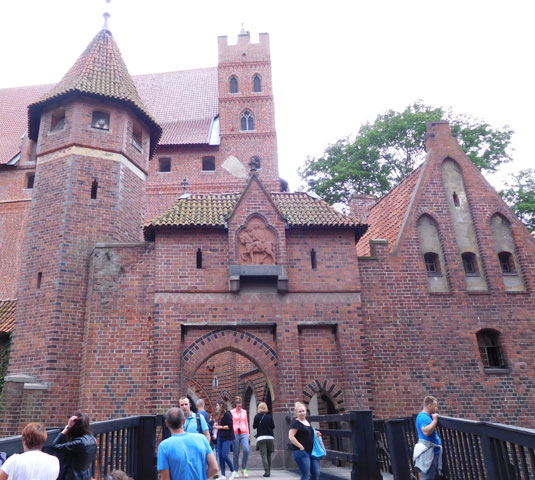
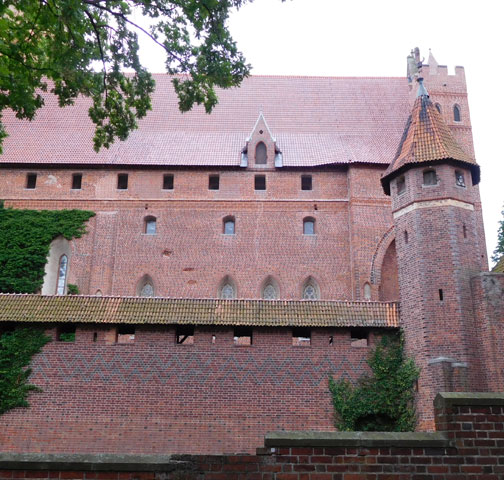
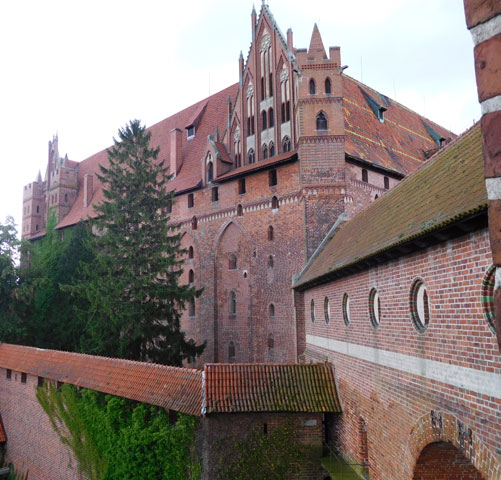
After all of this study, we needed a break! We escaped for a day to Sopot, the seaside resort for locals and visitors alike. With beautiful white sand beaches, a grand hotel, and loads of cafes and shops, this city offered us a total escape.
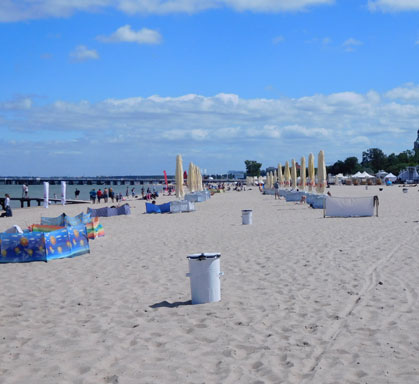
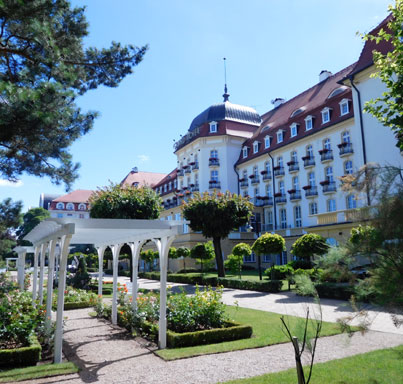
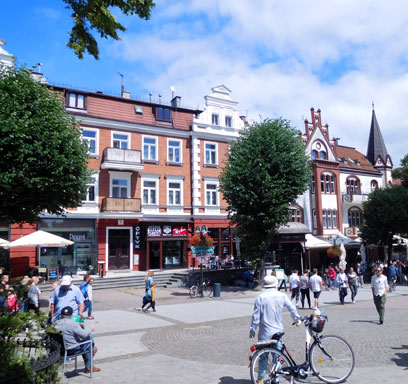
Gdansk offered us such a wide range of experiences, expansion of our knowledge of Polish history, and some fun. We departed a bit sad, knowing that there was much more to learn. Perhaps we will return.
Click here to return to our 'Summer 2016 - Back to Europe' page
Click here to return to our 'Searching the World for People Friendly Cities' page
![]()